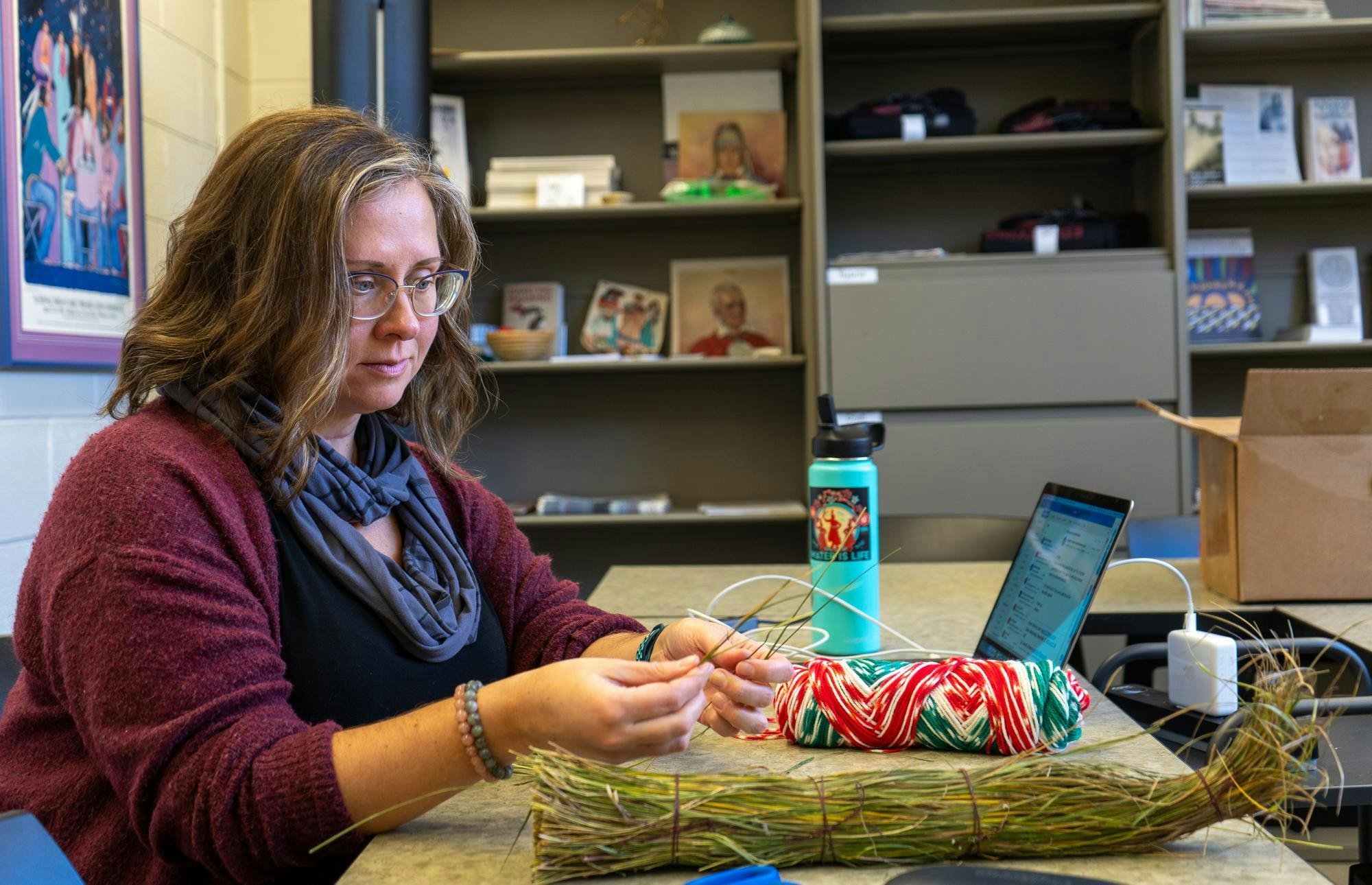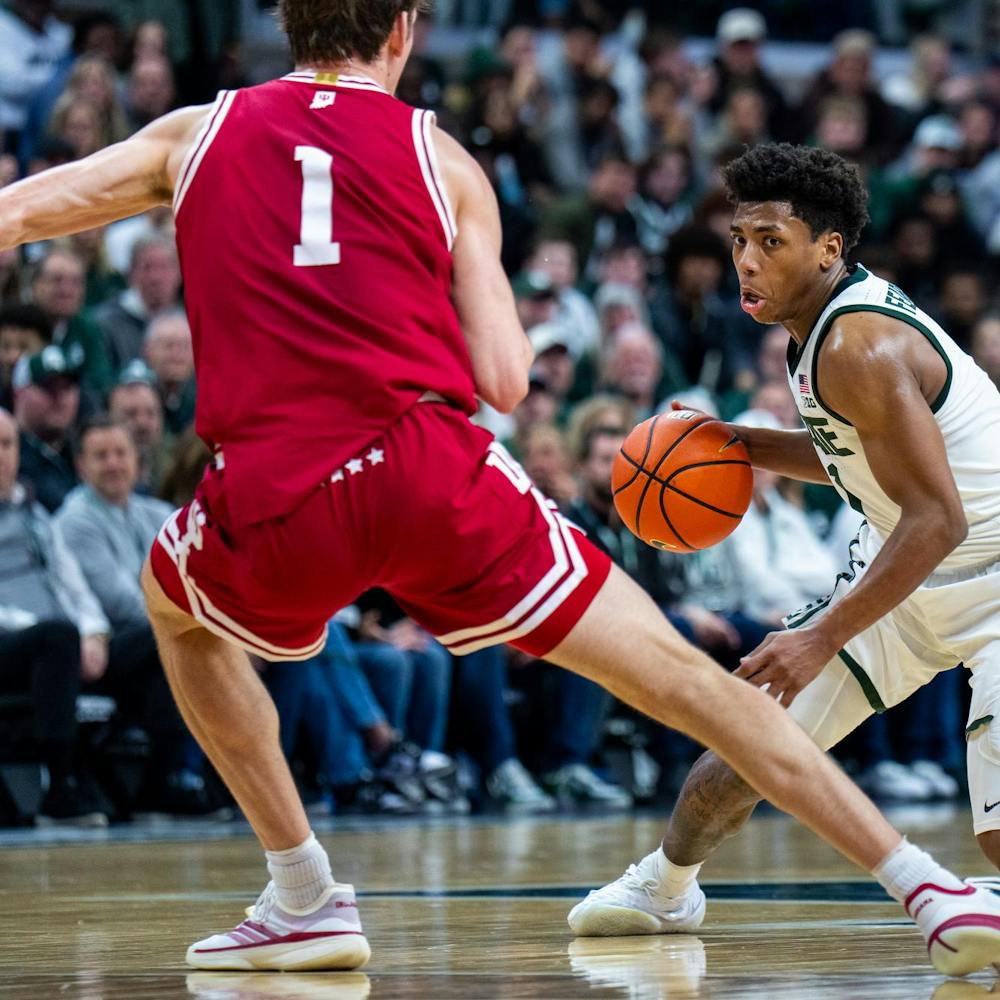But for some, this month is also a call to action and a time to raise awareness of deep-rooted problems that have been taking place for centuries. Some members of the MSU community are critical of how MSU has approached Native heritage, not just in November but year-round.
"I would not agree that MSU is doing a fantastic job when it comes to helping Indigenous people," social relations and policy senior Neely Bardwell said. "This university wasn't built for us, nor does it work for us currently, so that's a very isolating experience and can often discourage a lot of students from continuing their education or doing as well as they could."
Bardwell is a part of the Little Traverse Bay Bands of Odawa tribe and is serving their second year as the North American Indigenous Student Organization, or NAISO, co-chair.
NAISO is one of the four Council of Racial and Ethnic Students organizations here at MSU. It primarily functions to create programming for North American Indigenous students and to make the broader MSU campus aware of Indigenous cultures, Bardwell said.
Bardwell said MSU needs to do a better job of "meeting us where we’re at" and communicating.
Being on "stolen land"
Bardwell also pointed out that MSU's campus resides on "stolen land," and the university has failed to address the land grant history, which she sees as harmful.
MSU, known as the "pioneer land grant school" currently sits on land ceded in the 1819 Treaty of Saginaw, which claimed over four million acres of land that was home to the Saginaw-Chippewa tribe. Years later, in 1862, the Morrill Act started land grant colleges, and by using the land from the Treaty of Saginaw, Michigan State's campus arose.
American Indian and Indigenous Studies Interim Director Kristin Arola believes that due to MSU's campus sitting on Native American land, the MSU community must be aware of the history behind it.
"Because MSU resides on land ceded in the 1819 treaty of Saginaw, I feel that it's useful for universities to know the histories of who we are and who was here before us, and who is still here today," Arola said. "Native American Heritage Month is important because we need to know our history, where we come from, how we got to where we are and particularly learning about people who aren't exactly like ourselves."
However, not all students feel the need for the Land Grant to be recognized by the university, as undecided junior Julia Tehauno feels that MSU has bigger priorities to accomplish.
Tehauno said that "if they would acknowledge what happened, that's great," but that there is more MSU could be doing.
"We live under a colonial government in a state that doesn't exist because of its good treatment of Native people," Tehauno said. "I don't feel the need for that to be acknowledged by the thing that's taking up space ... I think the best thing (MSU) can do is support the Native people here now in very tangible ways. That, to me, is a priority."
Space for Indigenous students
Tehauno, who is a part of the Comanche tribe, believes that MSU could have the "biggest" Native American program in the state if they pushed hard enough. One major issue she wants to see focused on is building a better space for Indigenous students.
Tehauno said that with the way it's currently set up, people are spread out and distant from each other in "not the best" spaces.
"The bare minimum Michigan State could do is make things more centralized," Tehauno said. "Having dedicated spaces on campus is important, not just for students, but for faculty too, and for our students so we know where to go, where we can talk to mentors and things like that."
NAISO's advisor, Emily Sorroche, has been advocating for dedicated spaces in the new multicultural center and a place on campus for a gated fire, Tehauno said.
Support student media!
Please consider donating to The State News and help fund the future of journalism.
Arola also said the lack of space is a problem, citing the Native American Institute being located in the basement of the Kellogg Center, a "lack of space" in the Multicultural Center, and the Urban Planning and Landscape Architecture building, where AIIS is located, which is set to be torn down in the summer of 2024.
"AIIS is pushing for a space where we can bring together AIIS, Native American institute, the student groups, tribal extensions, and the Indigenous community as a whole," Arola said. "We want to give the community a space for peers and mentors to come together because community is important."
Arola hopes MSU will dedicate its resources to creating the space she and many other people desire.
Native American Institute Interim Director Kevin Leonard is also pushing for closer community spaces. Leonard said that in the past, Indigenous tribes have asked to have a central point office on campus that works with their native youth.
While Leonard believes that all of MSU's Indigenous programs can come together to create a space for the Native community, he said that lack of Michigan State support and funding is what currently stands in the way of what they're trying to build.
"Being underfunded is a big challenge that we face," Leonard said. "Because of this, our offices don't have the resources to fully be successful."
Recruitment, retention and support
Recruiting faculty and staff is another problem that Leonard said he wants to see Michigan State fix, claiming that it would depressurize existing faculty and workflow.
"One of the challenges that we've had is that we're a small population, not just student-wise but faculty-wise," Leonard said. "As administrative units, we simply need more help in recruiting and filling in positions around campus."
According to MSU's 2022-2023 Diversity, Equity and Inclusion Report, 61% of American Indian and Alaskan Native students graduate, which is 21 percentage points below average. In fall 2022, American Indians and Alaskan Natives made up 0.3% of students and 0.5% of faculty and academic staff.
Arola believes that it's the statistics like this that shy Indigenous people away from attending Michigan State.
"One thing we talk a lot about here is the recruitment and the retention of Native students," Arola said. "It's not just getting people to come here; you also need to have a reason for people to want to stay, so what's going on here that's going to make people want to stay."
This lack of representation can create negative experiences for Indigenous students, which Arola said the AIIS tries to combat by creating a space for the community.
"AIIS is pushing for a space where we can bring together this AIIS program, the Native American Institute, student groups, and tribal extensions," Arola said. "Like one big physical space where people can come together, and I think overall this would help with the retention of students just to give them a space for peers and mentors to come together because community is important."
Experiences and advocacy on campus
Student organizations have also gotten involved with bringing awareness to these issues, as Bardwell and NAISO are pushing to advocate change and create a safe space for the community.
"Because of these very worrying statistics, our goal is to advocate for policies or changes that can be made on an institutional level that will help make campus more inclusive and safe and welcoming for indigenous students," Bardwell said. "We try to provide a space for students to be unapologetically Indigenous and be themselves."
Linguistics senior Diana Cisneros, who is Indigenous to Mesoamerica and identifies as Nahua and Maya Poqomam, is the founding president of Timetzalimet, a student organization dedicated to providing a space for Indigenous students from Latin America and across the world. Timetzalimet also aims to teach the community about Indigenous peoples and end discrimination against them, Cisneros said.
For Cisneros, who said she's faced discrimination throughout her life, founding Timetzalimet has helped her find a community.
"We just want to have some space where we can do our traditions and celebrate our culture," Cisneros said. "That's all we want, and to be able to share it with each other and with other students at MSU."
In their time with Timetzalimet, Cisneros said they have been able to connect with people by learning that there are other people with similar experiences, educating people on Indigenous cultures and changing people's minds.
Similarly, Tehauno has learned more about her culture and where she comes from through Timetzalimet. Joining the club and taking part in other organizations and events has helped Tehauno reconnect with her heritage and find community, she said.
Tehauno said she has learned that being Indigenous isn't about sharing a culture or practices but instead more of a "political struggle against colonialism that people from all over the world can identify with."
More than one month
To Cisneros, Native American Heritage Month honors the accomplishments and strength of Indigenous people. Cisneros also sees this as a time to spread their culture and language, especially through Timetzalimet.
"For me, I think it's about bringing awareness to our history and everything we've accomplished, and I think, most importantly, our resistance as Indigenous people," Cisneros said. "That's what it means to me."
Cisneros also said MSU should sponsor more events during the month and year-round.
"This is the one month where all of the MSU departments and MSU organizations love to tokenize Indigenous students, and I don't see any events being pushed or sponsored specifically by the university," Cisneros said. "I don't see anything being done to try to acknowledge Indigenous people. We feel like we’re just being dismissed."
Bardwell hopes that when she visits MSU after graduating, she'll see more Native facilities, students and administrators. Though, as she continues her fight for collaboration and equality, she hopes to remind everyone what Native American Heritage Month means.
"It's nice to have a month that recognizes my identity and my community," Bardwell said. "Though there's this common belief that we only deserve to be talked about for only a month, but the reality is that by the end of November, we don’t just stop being Indigenous. It's not a costume that we will take off. November is a time that reminds me of who I am, where I came from, and who I'm working for and why I'm doing what I’m doing. For me, it’s recognizing the strength of myself and my ancestors."
Discussion
Share and discuss “Native American Heritage Month celebrates community, highlights issues within MSU ” on social media.







